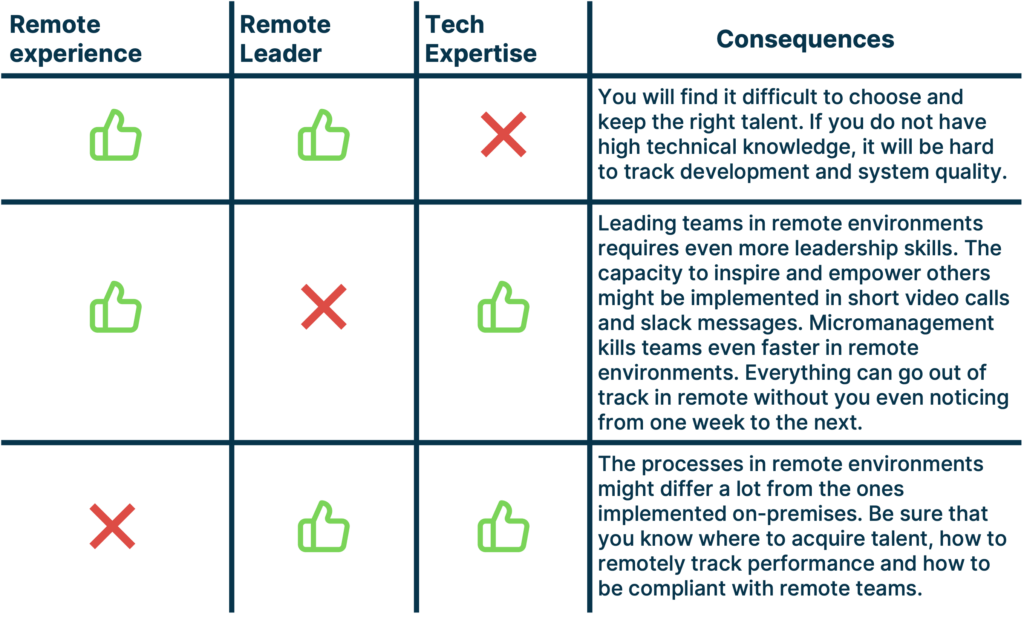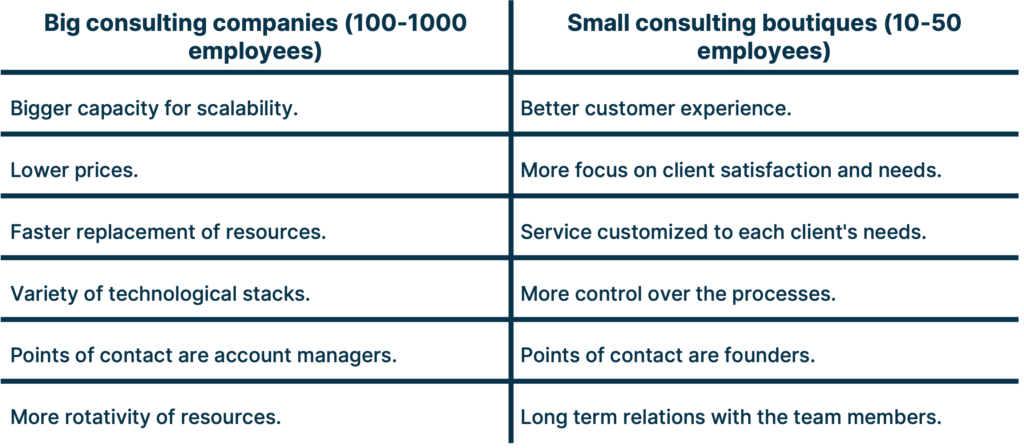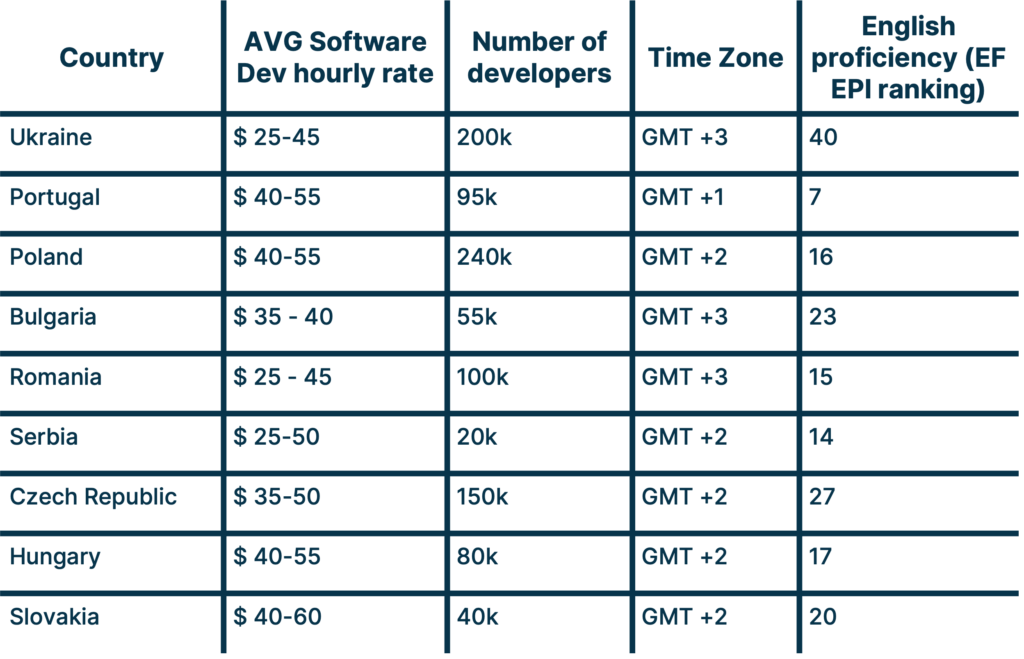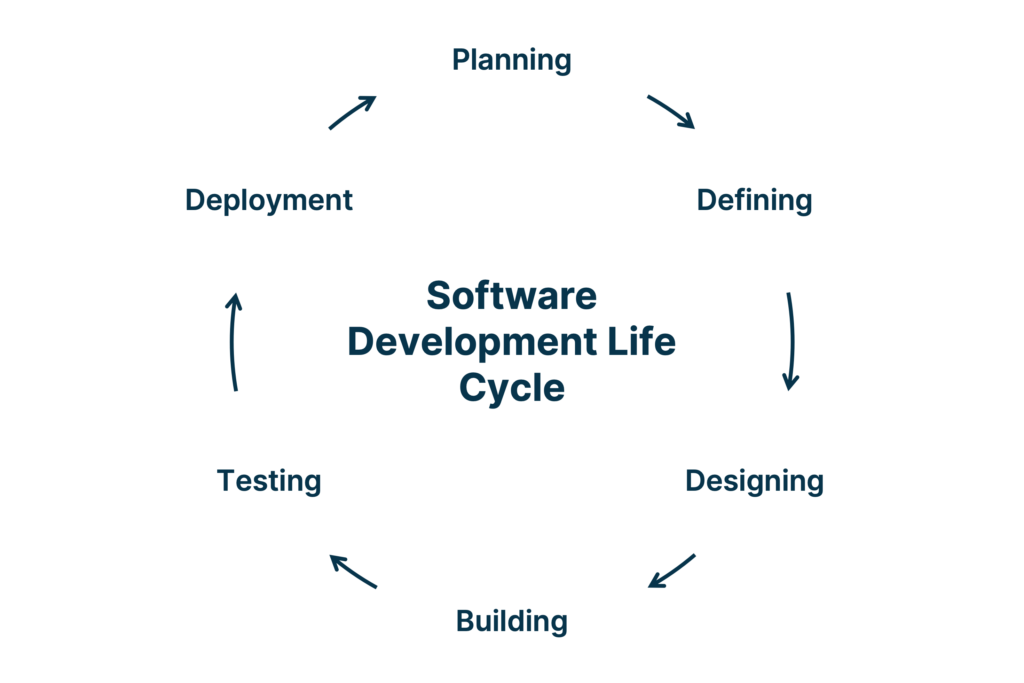The advent of information technology enabled the remote culture at scale and as a result, both the opportunity and challenge to build a remote software development team.
Between the work that is being done remotely, software development appears as one of the sectors that can easily take advantage of remote environments. This fact reveals at the same time opportunities and challenges to remain competitive in such a dynamic and distributed environment.
Remote work has shown even more prominence in the last two years due to the Covid-19 pandemic. After that, workers are even less willing to come back to offices.
Remote work trend
GitLab, in their remote work report (2021), showed that when asked about remote work policy, 84% of workers prefer to work in 100% remote or Hybrid-remote teams.
Company policy on remote work

Implications of going back to a full on-site policy
According to Mckinsey & Company, 30% of employees say that they were likely to switch jobs if they were obligated to return to fully on-site work.

This change in the ecosystem creates different opportunities in the way we see development teams, their composition, location and interactions.
Hybrid-remote or Fully remote software development team?
Hybrid-remote software development team
The Hybrid-remote policy has the advantage of maintaining a personal connection. It joins together the people that also prefer to go regularly to the premises and the ones that choose to work remotely.
Employees tend to have higher levels of commitment and trust in people they know in person. Knowing someone and sharing time in person adds a layer of social connection. By knowing better the teammates can positively influence team communication and resilience to adversity.
The disadvantages of this approach are related with:
- Commuting time.
- Infrastructure costs.
- Inappropriate office environment.
- Hybrid-remote meetings.
Hybrid-remote meetings were revealed to be the most underproductive. Having employees in the office spending all the time on remote calls with teammates is a contradiction to in-person policies.
When office time is asynchronous, the team needs to have remote processes just like a fully remote company.
Fully remote software development team
Fully remotes are becoming more common throughout the tech industry. The most cited advantages are:
- Increased productivity.
- Location independence.
- Increased focus time.
- Customized office environment.
- Lifestyle and work-life balance.
- Team cultural diversity.
- Reduced team costs.
The biggest challenge regarding remote employee relations relates to the difficulty of creating a feeling of belonging and accountability. In order to face this challenge, leaders must revolutionize their strategies and incorporate new benefits and motivational processes.
Several initiatives have been popularized by fully remote teams, such as:
- Remote team building events.
- Employee extra perks.
- Team annual/quarter retreats.

6 examples of fully remote companies
Several companies decided to adopt fully remote policies. These companies are considered to be on the edge of remote culture and are developing brand new ways people relate with employers and with work itself.
Examples of these companies are:
- Zappier
- Toptal
- Atlassian
- Shopify
- Gitlab
- TechRivo
- Hubstaff
Where to start on adopting fully remote policies to IT teams
If you think that remote policies can be a competitive advantage for your business. The first step is to read about and get in touch with the key concepts and challenges. The Harvard Business Review Guide to remote work is a good starting point.
Consider following some remote advocates on LinkedIn or Twitter to get the feeling of the latest trends and topics in the area. Pieter Levels created is a dutch entrepreneur that has created several remote businesses when travelling as a remote worker around the world. His content might inspire you on the trendy remote policies.
Another way to start adopting remote policies is by partnering with an already remote software team, taking advantage of their expertise.
Create a remote team from scratch VS partner with an existing remote software development team
Create a remote software team
If you have experience with remote teams, the right leadership remote mindset and technology expertise, then you should build your independent remote development team.
Be aware that for building it on your own, you need to have all the 3. Missing one might have the following consequences:

Partner with an existing remote software development team
By partnering with an existing team you reduce the risk of failure by acquiring the expertise of the team that took years of failures and successes to define the right approaches, processes and strategies.
TechRivo built a remote team to help entrepreneurs and innovators take advantage of remote software development environments. Schedule a meeting and share with us where you are and where you want to go. We will show you all the paths we know.
You can find software development partners at Clutch.co and have access to testimonials from previous partners.
The advantages of partnering with a remote software agency are the following:
- Team expertise in remote environments
- Diversification of skills
- Better return on investment
- Agility and flexibility to increase or decrease team size
- Controlled budget
- Quality delivery
- Delivery on time
This solution might seem slightly more expensive than creating your own development team, although what you should consider in this challenging choice is the Return on Investment (ROI) for both approaches. Our founders can consult you on the choice.
Consulting companies (100-1000 employees) or (consulting boutiques 10-50 employees)
When choosing the right partner you need to take into account its characteristics and business models.

You should also take into account that for big consulting firms, the business model depends on the scalability of teams and projects. For small consulting firms, that have a small number of clients, the focus is on growing together with those partners.
Find the best place
The best places to build a remote nearshore team bring together two important characteristics: places that empower a great lifestyle and that at the same time provide skilled developer talent at a lower cost.
Working-life balance and lifestyle
The most important facts to consider when choosing a remote location are:
- Habitation cost
- Cost of goods
- Internet connection
- Fun activities
- Safety
According to nomadlist the 6 places that better conjugate these facts are:
- Gran Canaria, Canary islands
- Lisbon
- Miami
- Porto
- Budapest
- Buenos Aires
Take a deeper look at each one of these options on the Nomadlist platform.
Costs of development
When looking for the places where you will hire your team members, the cost and skills are King and Queen.
When considering app development costs, good places are developing societies that focus on education and community empowerment by creating technological hubs.
Eastern Europe and Portugal are known for their competitive prices, cultural fit, skilled workforce, cultural similarities and prestigious tech hubs. In the following countries, you will find better professionals for a lower hourly rate.

Define the software development methodology
Waterfall
The most traditional methodology in software development is Waterfall. In this case, the scope of the project is 100% defined in the beginning. The tasks, their order and priorities are defined in the first project stages and kept rather static until the end. During the development, the tasks that are performed are archived, which doesn’t promote changes on the way.
Because of the way projects are structured, changing the scope on the way is not recommended.
This methodology is advised for solutions that are straightforward and with closed scopes. In those cases, it is easier to control the pace, deadlines and deliverables when compared with agile methodologies.
Agile
The primary goal of Agile methodologies is to reduce the risk regarding cost overrun and scope change.
In an agile methodology, the features (stories) are included in each sprint (usually with a duration of 1 to 3 weeks). It means that in each sprint, the project can change its scope and priorities. It gives the owners the freedom and flexibility to shape the product to their needs at a faster pace.
The adaptation to this kind of methodology might be challenging and demand methodological expertise. Communication is one of the key factors to the successful application of this methodology because in such a dynamic environment, documentation is commonly left to the second layer.
Define the Technology Stack
Development tech stack
The development tech stack really depends on your project needs. The requirements of your product, including its scalability, adaptability, device diversity, if it is a desktop, mobile or hybrid application, and what integrations with other systems are required, are part of the characteristics to take into account when choosing the right tech stack.

A common stack might include the following technologies:
- Backend
- Java
- Frontend
- AngularJS
- Database
- MySQL
- Infrastructure
- Aws
- Docker
- Kubernetes
- Architecture
- Microservices architecture
- Project management tool
- JIRA
Remote working tools for development teams
Slack
Slack is one of the most used tools for team communication, it enables both 1-1 communication and the creation of “rooms” assigned to specific groups, areas, tasks or clients. The way you organize it will influence how fluid and performant the communication is.
ClickUp
ClickUp is a project management tool. The platform enables multiple users to create, assign and manage tasks. It is one of the best tools because of its price, user experience and ready-made integrations with other tools. Having a tool like ClickUp is the only way to have your project organized and on track.
Github
Github is a software used by development teams to collaborate on coding in a systematic way. The collaboration tool provides features to secure, verify and monitor the code that all the developers are putting together. This kind of tool is a must to ensure code quality.
Codacy
Codacy is software that helps engineers and technical leads to ensure the standards of code quality. The system runs several algorithms and tasks that access how compliant the code is in with regard to programming best practices.
Figma
There are several tools used by designers and product managers to prototype features and screens, but Figma is for sure one of the most used ones. The Saas allows users to design systems and make the bridge to developers on how the platforms should behave and look.
Hubstaff
Time tracking and task management are crucial in remote environments. Without a good tracker is difficult to acknowledge what is taking more time in the business and where the money is going. Hubstaff allows detailed reports on time consumption which enables the change of focus to more rewarding tasks.
Dropbox
Dropbox is a file management system in the cloud. The tool is one of the best choices to collaborate on documents and easily share them with team members and devices. The system is compatible with all the common file formats.
Notion
From all the platform features, Notion is a great tool for knowledge transfer into the organization. Sharing processes and internal knowledge is essential to reduce friction when a new member joins or reduce dependency when a key member leaves.
Assign the development team roles
The resources that are required might vary from project to project. But the IT community has the following split as an average to software development.
- 15% business analysis
- 10% project management
- 15% QA
- 60% Development
Depending on how domain-specific the project is, the business analysis might decrease or increase in its percentage. Complex businesses, from the business perspective, might require more time and resources to translate business specificity into development tasks.
Hire the best software development team
Talent acquisition is a key part of the remote team creation process. The success in this phase might determine the success of the team in achieving its goals.
There are several platforms where you can advertise your positions and find the best candidates.
- AngelList
- UpWork
- Fiverr
- Remote Ok
- No Fluff Jobs
After screening the best candidates, meeting them in a video call and making a technical interview are the last steps to choosing which are the teammates you want embarking on your venture.
Define the System Development Life Cycle
The development life cycle is project-specific but follows common rules and best practices. An example of an SLDC can be seen in the figure below.

Define the objectives, goals and responsibilities
In order to achieve the desired result, goals must be defined in advance following the SMART goals criteria. According to the methodology suggested by George Doran, Arthur Miller and James Cunningham, goals must be Specific, Measurable, Attainable, Relevant and Timely bounded.
Key Performance Indicators (KPIs) should be defined to access the team performance and guide the leading team towards the achievement of the company’s high-level strategy.
Responsibilities and accountability need to be even more clear in a remote environment:
- Business analysis – Understand the business requirements and translate them into features of the system. Make sure that the system answers business needs.
- Project Management – Make the bridge between the business analysis and the technical team. Ensure that the team develops what is required from the business side in the agreed timelines, scope and resources.
- Quality assurance – Ensure that the system performs the activities described in the functional and technical requirements.
- Development team – The development team is composed of software engineers (tech lead, frontend developers and backend developers). The development team is responsible for building what is described in the technical tasks and documentation. Is the development team that brings shape and existence to digital solutions.
Conclusion
Remote policies are becoming more prominent each year. To remain competitive, will be mandatory that companies consider having remote teams develop their digital products.
If you are not confident in creating your team on your own, Techrivo will be a useful help. We have years of practical experience. We have made it wrong several times until achieving the team performance we have today. Schedule a technical meeting, and we will show you the path.
